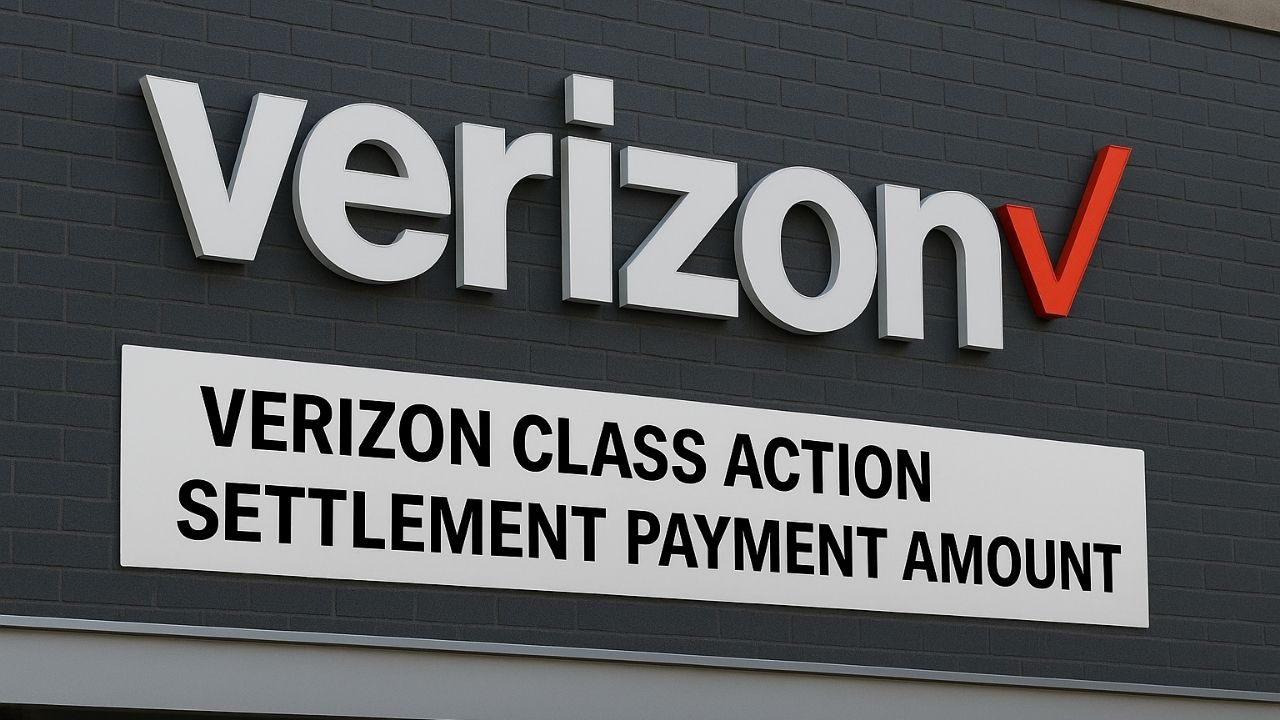As of early 2025, the much-anticipated Verizon Class Action Settlement has entered the payment phase, bringing clarity to the financial relief many customers have awaited since the case first gained national attention. Verizon agreed to pay $100 million to settle claims that it charged administrative fees to postpaid wireless customers without proper disclosure. While the final court approval was granted in 2023, payment disbursements began in phases starting January 2025.
Though this outcome marks a significant legal moment in consumer protection, the actual payout figures have sparked widespread discussion. For millions of eligible customers, understanding how their payment was calculated and why the amounts vary is more important than ever.
Verizon Class Action Settlement 2025 Payment Amount

The total fund allocated in the Verizon class action case stands at $100 million. However, not all of this amount reaches claimants directly. A portion of the fund is allocated for legal fees, administrative costs, tax implications, and processing expenses. The remaining balance is used for direct compensation to eligible participants who filed claims before the April 15, 2024, deadline.
| Fund Component | Estimated Amount |
|---|---|
| Total Settlement Value | $100,000,000 |
| Legal & Attorney Fees | $20–25 million |
| Claims Administration Costs | $3–5 million |
| Residual for Claimants | $70–75 million |
This allocation model follows typical class action practice, where court-approved deductions are made before the net payout is calculated for distribution among claimants.
Determining Individual Payouts
The individual payment each person receives is based on how many valid claims were submitted and the claimant’s position within the class. Most of the participants will receive a flat-rate amount, although in some cases, those who submitted supporting documentation—like Verizon billing statements showing administrative fees—could receive slightly more.
Customers have begun reporting payments ranging from $2.37 to $10.23, depending on the nature of their claim. These figures have been consistent across forums, user communities, and social media platforms. While some expressed dissatisfaction with the low amounts, the payments reflect the result of a fixed fund being divided among a massive class of claimants.
Influencing Factors Behind the Final Payment
Several dynamic elements influence how much money each person receives from a class action settlement. In the case of Verizon’s $100 million agreement, the key influencing factors are listed below:
- Total Number of Valid Claims – The larger the pool of submitted claims, the smaller the individual share. Millions of Verizon customers filed, significantly reducing the average payout.
- Claim Type and Supporting Evidence – Some claims included proof of overcharges or long-term service history. These could qualify for higher payment tiers.
- Allocation After Deductions – Once legal and administrative costs were removed, only around 70–75% of the total fund was left for distribution.
- Equal Share Distribution Model – Most payouts followed a flat-rate method instead of damage-based tiering, resulting in uniform payouts for the majority.
- Payment Method Selection – A choice between direct deposit and mailed checks did not change the amount but did affect the speed of disbursement.
These factors together created the framework used by the settlement administrator to issue individual payments.
Average Payment Values Observed
Although the settlement did not specify a guaranteed amount per claimant, general ranges have emerged from publicly shared recipient data. The values below give an approximate picture of the financial compensation received.
| Claim Category | Observed Payment Range |
|---|---|
| Standard Claim (No Documentation) | $2.37 – $3.50 |
| Verified Claim (With Documentation) | $5.00 – $10.23 |
Payments were issued via the method selected during the claim submission process, either through direct bank transfer or paper check. Recipients with verified billing discrepancies were typically at the higher end of this spectrum.
Customer Reactions and Understanding the Low Amounts
The settlement is intended to resolve legal concerns around the lack of fee disclosure, not necessarily to reimburse full monetary losses. While many customers anticipated larger payouts due to the high settlement amount, they were unaware that over 25 million claims might have been processed. The proportional dilution of the residual fund, once administrative costs were subtracted, explains why the compensation ended up being modest.
Below are five key reasons why the payout figures remained low:
- Overwhelming Volume of Claimants: A high participation rate drastically reduced per-person value.
- Small Value of Individual Claims: The monthly administrative fees ranged between $1.95 and $3.30, not a massive loss individually.
- Flat Compensation Model: Without a sliding scale or loss-based distribution, most users received the same basic payout.
- Significant Legal & Processing Costs: Upfront costs consumed over 25% of the fund.
- No Minimum Guaranteed Amount: The settlement didn’t specify a fixed baseline for individual payments.
These points contextualize the limited compensation in financial terms, showing that the payout was symbolic of the principle more than the loss amount.
Payment Tracking and Future Updates
If you filed a claim before the deadline and haven’t received a payment yet, it is advised to check the status using your claim ID on the official settlement website. Some payments are being issued in phases and may take until mid-to-late 2025 to complete, especially for users who opted for checks by mail.
You may also contact the claims administrator or review the FAQs on the website to resolve issues related to non-receipt, incorrect payment amount, or verification delays.